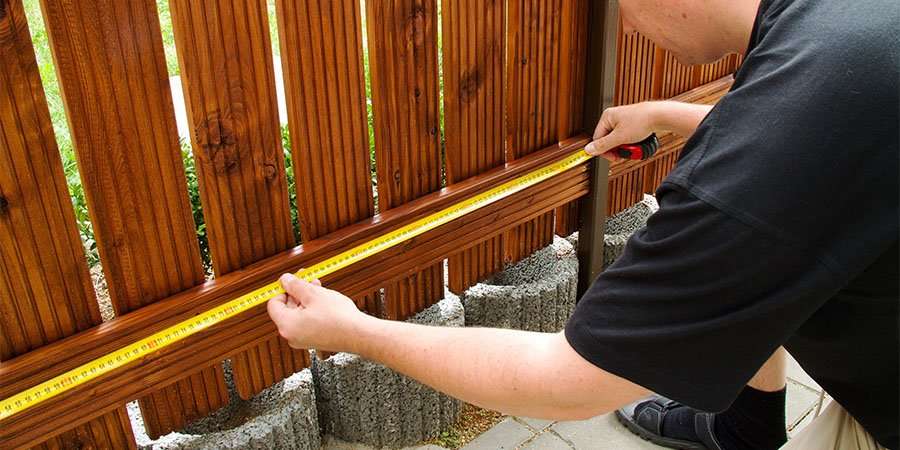All Categories
Featured
Setting up a fencing on your building can include privacy, protection, and aesthetic allure, yet before you start digging holes and setting blog posts, it's vital to comprehend whether you require a permit. Not obtaining the required authorizations can result in penalties or the need to get rid of the fence.
Why Are Allows Necessary for Fencing Installment? Authorizations are essential for making certain that your fence complies with regional zoning laws and building regulations. These guidelines help make sure the security of your building and the bordering area. Furthermore, permits stop disputes with next-door neighbors or local authorities, specifically when it comes to building lines, height limitations, and general style.
In several situations, neighborhood authorities call for authorizations to regulate points like presence at intersections or the closeness of a fencing to public rooms like walkways or roadways. Licenses also help guarantee that fencings are installed appropriately and safely, specifically when it pertains to high fencings or distinct products.
Common Types of Permits for Fence Installation. The kind of fence you intend to set up and your location will determine which licenses are called for. Below are the most typical types:
Structure License. A building license is generally required for fencings that surpass particular height limitations (often above 6 feet), are situated near a public roadway or sidewalk, or are made from specific products. Building permits make sure that the structure satisfies neighborhood building regulations, including security criteria.
Zoning License. Zoning licenses are commonly called for to guarantee that your fence conforms with regional zoning legislations. Zoning legislations can specify where a fence can be positioned on your residential or commercial property (e.g., along residential property lines or ahead lawns), as well as set limits on fencing elevation. These laws are designed to avoid blockages that can influence web traffic security or area looks.
![]()
Setback License. In some areas, you may need a setback license to place your fence a details distance from property lines, roadways, or utilities. Troubles are intended to preserve proper room between structures and building boundaries, decreasing potential disputes with neighbors or public infrastructure.
Homeowners Organization (HOA) Approval. If your home is part of a community controlled by a Homeowners Organization (HOA), you will likely need approval from the HOA before setting up a fence. HOA standards often regulate the style, height, materials, and also color of fencings, making sure that they match the overall visual of the community.
The Process for Acquiring a Fencing Authorization. To obtain a fence license, you generally require to call your neighborhood city or region office. Most areas have a structure department or preparation office where you can look for licenses. The procedure involves completing an application and giving thorough info about your proposed fence, including:
Fence design (materials, height, design) Place on the residential or commercial property. Residential or commercial property line details (for accurate positioning) In many situations, a site strategy revealing the suggested fencing's position will certainly be needed. You might also require to pay a permit fee, which can vary based on area and the complexity of the task.
Once you send your application, the local authorities will review it to make certain the fencing adheres to local guidelines. Relying on your location, you may likewise require to schedule an inspection or enable for a residential property study.
When Do You Not Required a License? In some instances, a license might not be called for. Commonly, you might not require an authorization if:
![]()
The fencing is under a specific elevation (often 3-4 feet for front lawns) You're changing an existing fencing with the exact same kind and elevation. The fence is temporary (such as a yard fencing) However, it's constantly a great concept to consult your regional building or zoning division to verify the demands, as guidelines can vary.
Repercussions of Not Getting a License. In some situations, you may require to re-install the fencing according to code, which might be pricey and lengthy. Furthermore, not complying with the correct allowing procedure can create troubles with neighbors, specifically if your fence prolongs past your property line or does not fulfill height or layout needs.
Verdict. Before setting up a fencing, make sure you're mindful of the regional regulations and whether you need a permit. By obtaining the proper licenses, you'll guarantee that your fencing is legitimately compliant, safe, and totally free from future difficulties.
Why Are Allows Necessary for Fencing Installment? Authorizations are essential for making certain that your fence complies with regional zoning laws and building regulations. These guidelines help make sure the security of your building and the bordering area. Furthermore, permits stop disputes with next-door neighbors or local authorities, specifically when it comes to building lines, height limitations, and general style.
In several situations, neighborhood authorities call for authorizations to regulate points like presence at intersections or the closeness of a fencing to public rooms like walkways or roadways. Licenses also help guarantee that fencings are installed appropriately and safely, specifically when it pertains to high fencings or distinct products.
Common Types of Permits for Fence Installation. The kind of fence you intend to set up and your location will determine which licenses are called for. Below are the most typical types:
Structure License. A building license is generally required for fencings that surpass particular height limitations (often above 6 feet), are situated near a public roadway or sidewalk, or are made from specific products. Building permits make sure that the structure satisfies neighborhood building regulations, including security criteria.
Zoning License. Zoning licenses are commonly called for to guarantee that your fence conforms with regional zoning legislations. Zoning legislations can specify where a fence can be positioned on your residential or commercial property (e.g., along residential property lines or ahead lawns), as well as set limits on fencing elevation. These laws are designed to avoid blockages that can influence web traffic security or area looks.

Setback License. In some areas, you may need a setback license to place your fence a details distance from property lines, roadways, or utilities. Troubles are intended to preserve proper room between structures and building boundaries, decreasing potential disputes with neighbors or public infrastructure.
Homeowners Organization (HOA) Approval. If your home is part of a community controlled by a Homeowners Organization (HOA), you will likely need approval from the HOA before setting up a fence. HOA standards often regulate the style, height, materials, and also color of fencings, making sure that they match the overall visual of the community.
The Process for Acquiring a Fencing Authorization. To obtain a fence license, you generally require to call your neighborhood city or region office. Most areas have a structure department or preparation office where you can look for licenses. The procedure involves completing an application and giving thorough info about your proposed fence, including:
Fence design (materials, height, design) Place on the residential or commercial property. Residential or commercial property line details (for accurate positioning) In many situations, a site strategy revealing the suggested fencing's position will certainly be needed. You might also require to pay a permit fee, which can vary based on area and the complexity of the task.
Once you send your application, the local authorities will review it to make certain the fencing adheres to local guidelines. Relying on your location, you may likewise require to schedule an inspection or enable for a residential property study.
When Do You Not Required a License? In some instances, a license might not be called for. Commonly, you might not require an authorization if:

The fencing is under a specific elevation (often 3-4 feet for front lawns) You're changing an existing fencing with the exact same kind and elevation. The fence is temporary (such as a yard fencing) However, it's constantly a great concept to consult your regional building or zoning division to verify the demands, as guidelines can vary.
Repercussions of Not Getting a License. In some situations, you may require to re-install the fencing according to code, which might be pricey and lengthy. Furthermore, not complying with the correct allowing procedure can create troubles with neighbors, specifically if your fence prolongs past your property line or does not fulfill height or layout needs.
Verdict. Before setting up a fencing, make sure you're mindful of the regional regulations and whether you need a permit. By obtaining the proper licenses, you'll guarantee that your fencing is legitimately compliant, safe, and totally free from future difficulties.
Latest Posts
Quick and Hassle-Free Shower Room Upgrades
Published Apr 20, 25
1 min read
Expert Auto Services at Montclare Auto Repair - Explore Now
Published Apr 19, 25
2 min read
Safeguard Your Future with WyHy's Unique Certificate Options
Published Apr 19, 25
1 min read